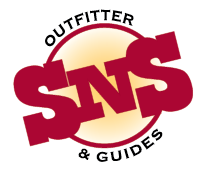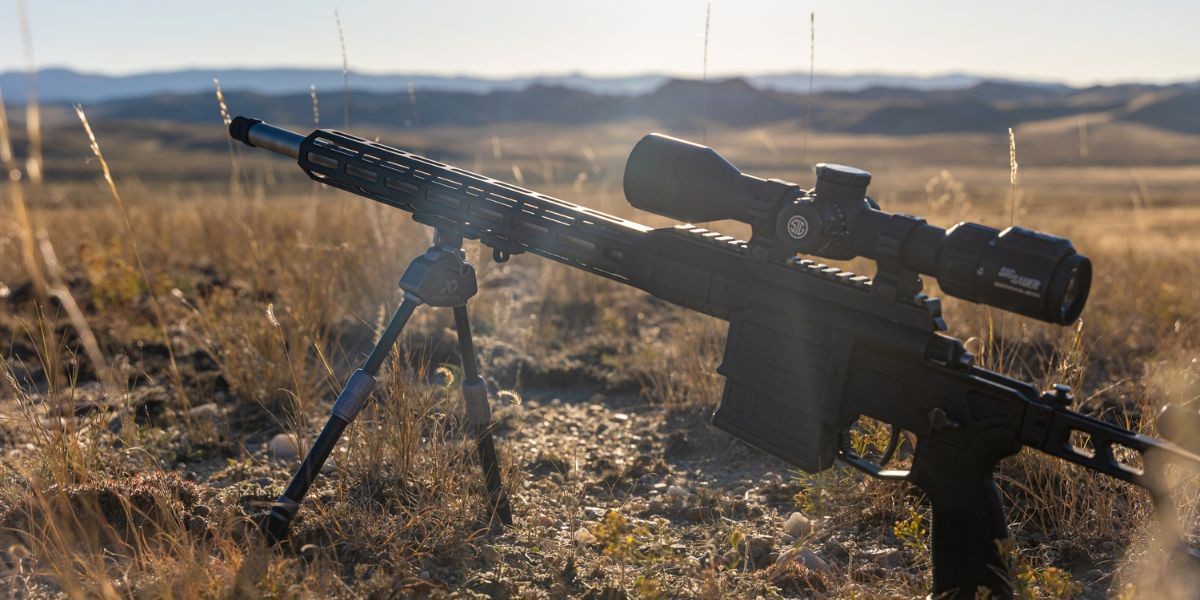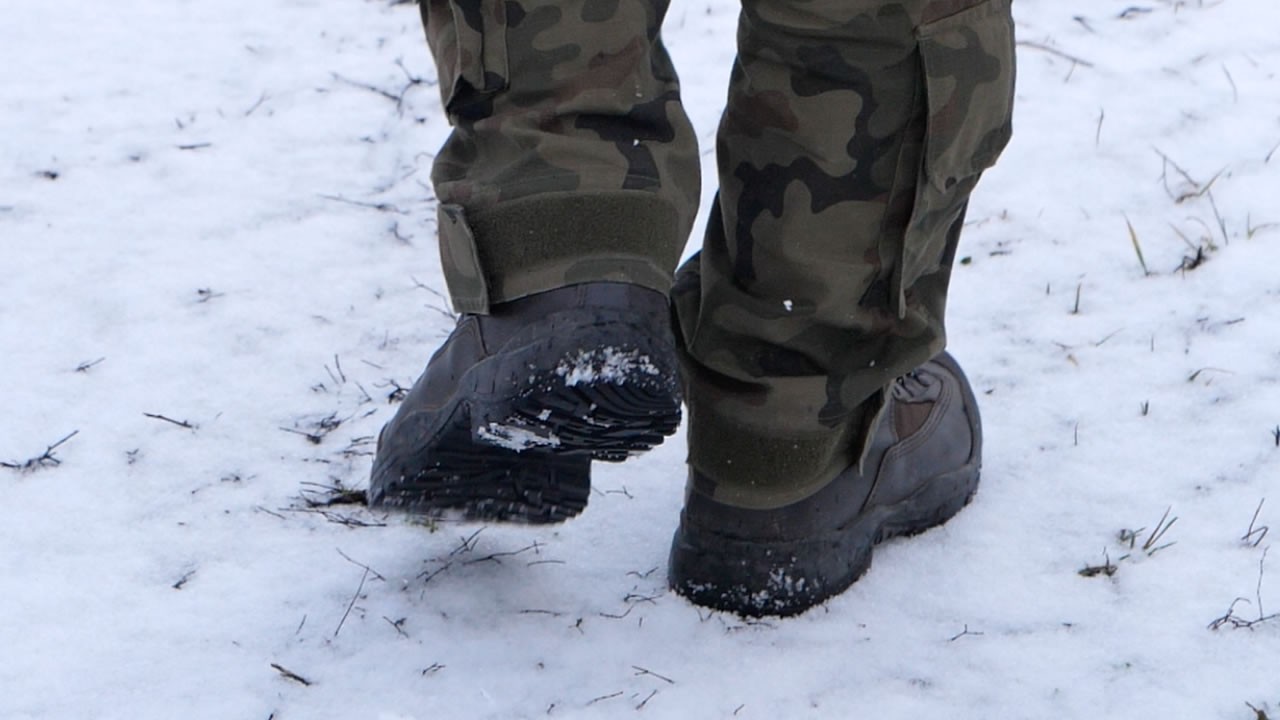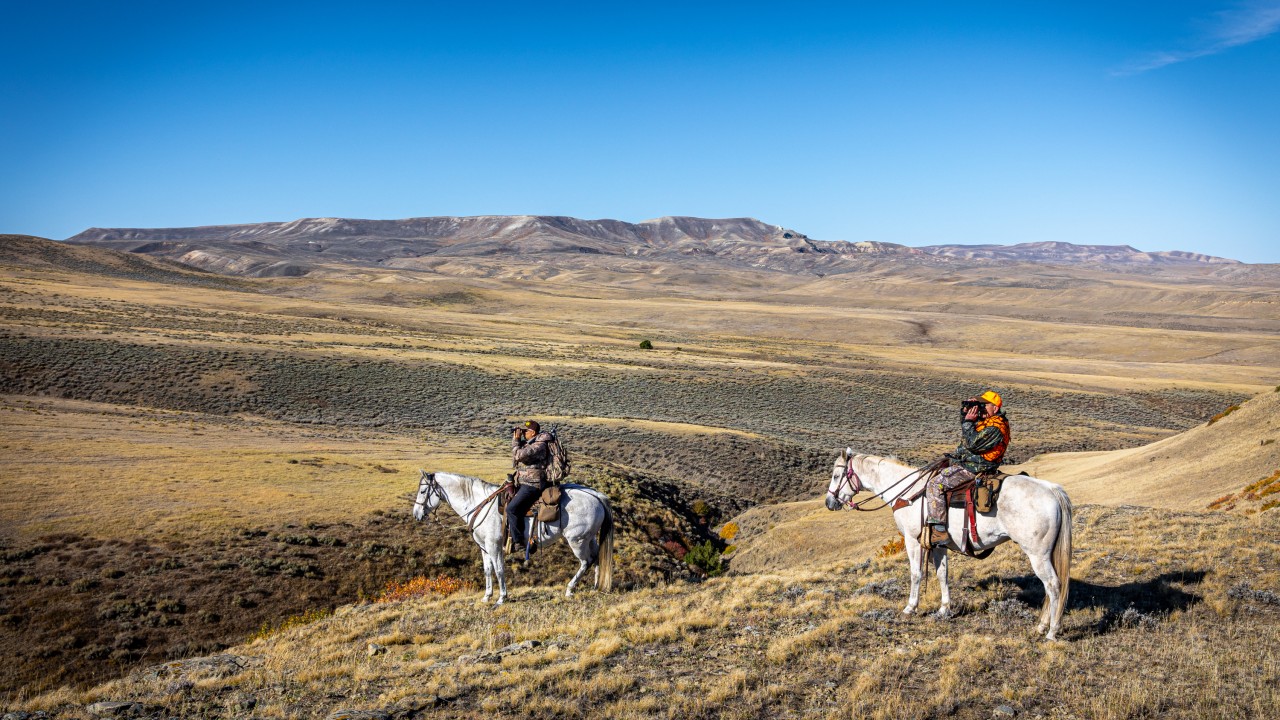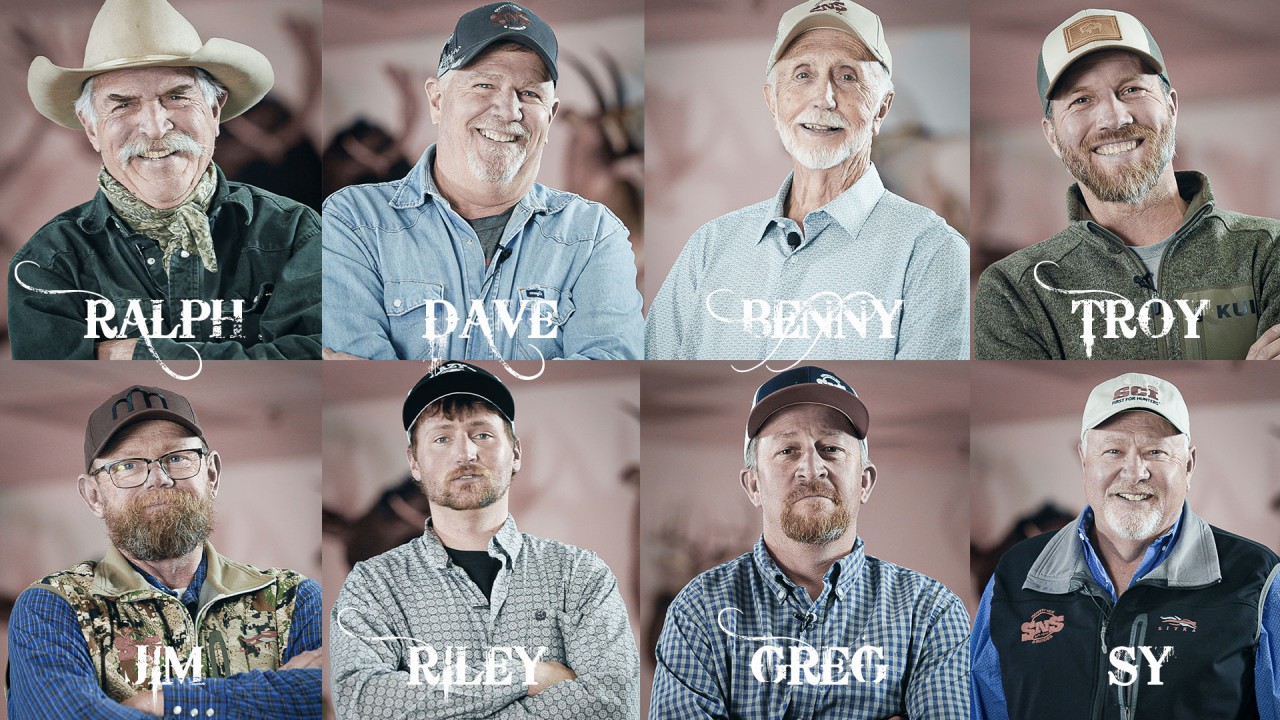Written by Bill Brown
In a world where people are sensitive, protective, and judgmental, hunters are often questioned as to why they hunt. Does it not bother them to take the life of a wild animal? The truth is, it’s not that simple.
One of the most important aspects of hunting is the food value of what we hunt. Knowing exactly where our food comes from — and for those hunters who process their own meat, exactly how it’s aged and taken care of — is the most satisfying and rewarding part of the hunting experience. Wild game is known as some of the healthiest meat on the planet. It is also some of the most delicious! Many on the anti-hunting spectrum would counter with, “You can buy meat at the grocery store — why don’t you leave the wildlife alone?” Well, a hunter’s counter argument is that just because you choose to purchase processed meat (from a domesticated animal) in a grocery store, does not make you morally superior to those who fill their freezers in a different manner. Whether it’s cattle or mule deer, they all walk on four legs. However, wild game is able to roam freely and eat what they choose.
Hunting also allows families and friends to spend valuable time together in the wilderness. These memories transcend generations. For that matter, some of my earliest memories involve bouncing around in a single cab pickup with my dad, mom, and brother hunting antelope, elk, and deer. I can also vividly remember the first time I heard a cow elk calling her calf while hunting with my grandpa in a patch of downfall timber. From an early age, hunting instilled in me the importance of family and friends as well as the importance of spending time outside enjoying everything that nature has to offer. There is nothing more exciting than being in close quarters with a bugling bull elk or quietly sneaking within a stone’s throw of a bedded muley buck!
As human encroachment on natural wildlife increases, we come to another very important part of why we hunt and why hunting is necessary: wildlife management. Every wildlife ecosystem has a carrying capacity and without proper management, the wildlife populations are at risk of uncontrolled population growth and massive die-offs. That is where we — as hunters — come into play. We are the world’s first and most diligent conservationists. And while it may be difficult to comprehend, hunters get just as much thrill viewing wildlife as non-hunter do. For us hunters, it isn’t just about wanting healthy wildlife populations so that we have more animals to aim at. We live where we live
because of the abundance of wildlife and the endless opportunities to watch them in their natural element. Whether it’s witnessing a doe antelope nursing triplet fawns or a bachelor group of mule deer bucks on a summer afternoon, the joy is in the entire experience.
The simple truth is that we hunt because it’s deeply rooted in our blood and our family traditions. We have the utmost respect for any animal we harvest, as that animal provides food for our families. It’s not about the thrill of taking a life, it’s about all the experiences leading up to that point. It’s about learning the skills that are handed down from previous generations that allow us to make the hunting both clean and ethical. That is — at the very least — what we owe the elk, deer, or other wild game that graces our dinner tables.
Admittedly, selecting
the right hunting outfitter is not an easy process. With hundreds of thousands
of outfitters around the world, there are numerous aspects to take into
consideration. First, what species are you interested in hunting? Once you have
that figured out, which state do you want to hunt in? Are you looking for an
area where tags are easy to draw? Furthermore, are you looking for a trophy or
simply want to fill your freezer? You’ll also want to consider the length of
the hunt and whether or not you prefer a horseback hunt. As you can see, there
are a plethora of factors to take into consideration.
Once you
narrow down your preferences — or at least have a fairly solid idea of your
likings — you take to the Internet. Between interactive websites, great trophy
photos, and testimonials that make you feel like you were on the hunt yourself,
it’s difficult to choose. So, here is what we suggest:
Thanks to the Wyoming Hunter Defense Fund and those who have donated to this important cause, a victory was won last month that saved Wyoming nonresident hunting license allocations.
Senate Bill SF0069 would have cut nonresident license allocations for moose, bighorn sheep, mountain goat and grizzly to just 10%. This would have cut the number of nonresident moose tags in half and reduced nonresident bighorn sheep and mounting goat hunting opportunities by 60%.
Fortunately the Wyoming Hunter Defense Fund was able to lobby during the 2015 general legislative session. With help from the Wyoming Office of Tourism and other concerned businesses and individuals around the state, the bill was soundly defeated.
Despite the fact that hunting tourism represents hundreds of millions of dollars in economic impact and provides the majority of funding for our wildlife and hunting opportunities, bills like this have become all too common recently. If you are a Wyoming business owner, resident hunter, nonresident hunter or anyone who values the benefits of hunting tourism in Wyoming, we encourage you to donate to the Wyoming Hunter Defense fund.
We are already battling similar bills and the fight certainly is not over. A recent House Bill (HB112) sought to implement a 90/10 license allocation on all big game hunting licenses in Wyoming. This would have cut the number of nonresident hunters in Wyoming by half. That would equate to a loss of $100 million in tourism revenue, $7 million in lost license revenue for the Game and Fish Department, 250,000 acres in land access, and hundreds of thousands of dollars in Conservation Stamp funding.
The Wyoming Hunter Defense fund has been working hard to communicate this message to business owners, residents and nonresident hunters. Wyoming nonresident hunting license sales are a critical part of our state's economy and are in large part responsible for the great hunting opportunities that we enjoy today.
For more information, please visit wyominghunterdefensefund.com.
This is our third post in a series on mule deer hunting tips. In the first article, we shared our keys to glassing on a mule deer hunt, and in the second article, we offered a few tips on where to locate mule deer. In this post, we'd like to share with you some of our tips on stalking mule deer.
As we mentioned in the previous posts, we have seen a steady increase in the popularity of mule deer hunting over the last several years. Wyoming is one of the best places on earth to chase these magnificent animals and we continually receive questions about mule deer hunting opportunities. Their size, the challenge, and the spectacular country that they inhabit all combine to make for an unforgettable big game hunting experience.
After more than 30 years of hunting mule deer in Wyoming, we have see our share of successes and mistakes along the way. Mule deer are notoriously difficult to get close to. Stalking these animals requires a great deal of patience and care. Here are our top 5 tips for stalking mule deer:
- Avoid unnatural noises.
- Don’t skyline yourself.
- Pay attention to the wind.
- Be patient when you don’t have an approach.
- Don’t bump the does.
For more information on Wyoming mule deer hunts with SNS Outfitter & Guides, please visit our Mule Deer Hunting Page. For information on hunts for pronghorn antelope, elk, black bear, whitetail deer and other opportunities in Wyoming and Montana, be sure to visit our Home Page. You may also request a free color brochure or call us anytime with questions at 307-266-4229.
When chatting with first-time clients and hunters from across the country, we’re often asked what can be expected on a hunt with SNS. What is a typical day like on a Wyoming hunt with us?
Here’s a short photo tour, showing a day in the life at a typical SNS hunting camp.
1. Up Before Dawn
At all of our camps across Wyoming, whether you’re hunting elk in the mountains or antelope further east, we’re always up well before daylight. Hunters can expect a home-cooked, hot breakfast before departing on horseback, on foot or by vehicle.
On our horseback hunts, guides will have your animals saddled and ready to go by the time you finish breakfast.
2. The Hunt Begins
The distance from camp to the hunting area varies greatly, depending on the area and your Guide’s plans for the day. Horseback or vehicle rides of an hour or more are not uncommon. In other cases, hunting may begin right outside your door.
On many hunts, the day often begins behind the binoculars or spotting scope. As soon as it’s light enough to see, we begin glassing. Spotting those first animals of the day is always an exciting moment.
3. Long Days in the Field
We typically pack lunches to bring into the field to maximize hunting time. Without having to return to camp during midday, we will continue hunting through the afternoon. How we hunt the day will largely depend on the game and the weather.
4. When Game is Down
If you have an opportunity to harvest an animal, your guide will take photos and field dress the animal. If we’re hunting by vehicle, your animal will be loaded up for the trip back to camp. When hunting by horseback, your guide will quarter the animal and load it on to a packhorse for the return to camp.
5. A Hot Meal and Warm Bed Awaits
Upon your return to camp each day, a home-cooked dinner will be waiting. Your guide will unsaddle horses or get gear organized while you have a chance to get cleaned up. Then hunters and guides gather around tables to share their stories from the day.
After dinner, hunters are welcome to stick around and swap stories, but most will filter off to bed and prepare for another day of the hunt.
Having the right gear can make or break your Wyoming hunt, and this is especially true of your boots. Boots could possibly be your most important investment after your firearm or bow. You will wear them every day in the field, and they must perform well. If you are cold, wet, or get blisters on your feet, it’s not going to be a fun experience. You may not be able to spend the necessary time in the field, and you may not be able to hike to the locations necessary to get a shot opportunity. This would obviously be a huge disappointment.
General Considerations for Boots
When considering boots for a big game hunt, there are a few common features that hunters should always look for. First, a quality boot should have a waterproof membrane like Gore-Tex. It should also have an aggressive outsole like Vibram. And a quality boot should be relatively lightweight. Ideally, a pair of boots should weigh no more than 5 lbs. In many cases, particularly for the early seasons, there are many boots that weigh much less.
The height of the boot is also a key consideration. In general, we recommend a boot that’s no less that seven or eight inches. This will give you the necessary ankle support for walking in rough country. Height also provides protection when traveling through snow or crossing streams. But we also recommend that hunters also pack a pair of gaiters for those situations. Gaiters keep water or snow from getting into your boots and will keep the bottom of your pants dry.
Perhaps the most important consideration for boots is the fit. Each brand fits slightly differently and some may be wider or narrower than others. Therefore, it is important to try on a few different brands of boots before purchasing. After you make a purchase, it is equally important that you put some miles on them before your hunt. You must be confident that your boots fit well and will keep you blister free.
If you purchase a quality pair of boots that fit your feet correctly, they should perform well right out of the box with no break-in period and no blisters. The reason that we recommend putting some miles in your boots before your hunt is to be sure that they fit you well and won’t cause problems in the field.
Boots For Archery and Early Seasons
Let’s now take a closer look at selecting boots for the early season. September in Wyoming brings big temperature swings. Mornings may be in the 20s or low 30s and midday temperatures may approach the 60s or warmer.
Therefore, insulated boots are not a requirement. We like to steer clients to a lightweight boot that’s 2.5 to 3.5 lbs.
A minimum height of seven to eight inches is recommended. Remember, with today’s technology in materials, lightweight doesn’t mean you need to sacrifice support. There are many good choices that provide excellent support in a lightweight package and they don’t have to be hunting specific. General hiking boots can make a great choice for an archery hunt.
Boots For the Late Seasons
During the October hunts, big temperature swings may occur with chilly mornings as low as the high teens. By midday it can be as warm as the low 50s. As we get into late October, the weather can turn to winter conditions quickly with lows in the single digits and sometimes below zero.
Snow can be a real possibility throughout the entire season, but especially late in October. Needless to say, insulation is a core requirement. We recommend a boot with about 400 grams of insulation. When snow is on the ground, an insulated rubber bottom pac boot like those made by Schnee’s or Kenetrek are hard to beat.
Ideally, we recommend that hunters bring two pairs of boots to camp. First, a good pair of insulated Gore-Tex, hiking style hunting boots that are a minimum of nine inches, and a second pair of boots like pac boots as a backup or for very cold and wet weather.
It’s easy to make the case that after your weapon, a couple pair of good boots is the highest priority for your Wyoming hunting trip in terms of gear. If your feet aren’t warm, dry and comfortable, it will be difficult to enjoy yourself in the field. Trade-offs can be made with lower quality gear in many areas of clothing. But boots and good quality rain gear is where you want to buy the best you can afford.
We’ve received a great deal of questions recently about a giant crack in the earth that recently appeared on a ranch where we operate in the southern foothills of the Bighorn Mountains. Thinking it was interesting, but not knowing that it would get so much attention, we posted a photo on our Facebook page. After being shared more than 7,000 times, we started receiving a flood of questions and comments.
Here’s what we know so far: we have two outfitted camps on this ranch. We hunt here every year and have been doing so for decades. Our guides first noticed the giant fissure in early October. We couldn’t tell what had caused so much earth to suddenly move, but it certainly had not been there long.
A couple of weeks later, an engineer from Riverton, WY joined us to take a closer look. We walked the perimeter and took estimates on size using a rangefinder. We estimated the crevasse to be about 750 yards long and about 50 yards wide.
According to the engineer, there was a cap rock being lubricated by a spring. Additionally there was a spring running across east to west, which then caused the entire thing to slide north. The engineer estimated about 15 to 20 million yards of movement. According to the USGS, there has been no seismic activity, so we have no other possible explanations at this time.
Since posting the photo on Facebook, we’ve received countless offers from geologists, scientists and reporters from all over the world to come and take a look at this fascinating event. It truly is incredible to look at, a canyon that formed almost overnight – a mountainside that seems to have suddenly collapsed.
As we speak with experts and learn more about it, we will share updates here and on our Facebook page.
SNS Outfitter and Guides is Wyoming’s top outfitter and the largest pronghorn antelope outfitter in North America. With more than 700,000 acres of private land and prime wildlife habitat, we offer more hunting opportunities that anyone else in the state. If you’d like to find out more about our hunts, please visit our website at HuntWyo.com. For availability and specifics, please contact us online to request a free brochure.
Whether it’s open country antelope hunting, a high country mule deer hunt or archery elk, we spend a great deal of time each season looking through the glass. When hunting in Wyoming’s vast landscapes, having quality binoculars provides a clear advantage. Here are three of our tips on selecting binoculars for a western hunt.
1. Consider Quality
Binoculars can be a confusing item to shop for. Everyone has a different opinion and you’ll find options that range from a couple hundred dollars to thousands. However, don’t let it make your head spin. It doesn’t have to be complicated.
Higher quality glass allows more light, which is particularly noticeable at dawn and dusk and can extend your glassing time at both ends of the day. High quality glass will also improve upon sharpness, distortion and color, reducing eye fatigue on hunts that require a great deal of glassing.
You don’t have to purchase an ultra high-end bino to find good quality. But there is a difference in quality at different price ranges. Like anything, you get what you pay for. When looking at binoculars, decide on the best budget you can afford and use that as your starting point.
2. Consider Size and Power
When selecting optics for western hunting, you want binos that are going to be versatile enough for any type of adventure. You also need a balance between lightweight portability and sufficient power. We typically recommend something in the 8x30 to 10x40 range.
If you were to ask 10 different guides, you’d get a variety of different answers on the pros and cons between 8x and 10x binos. But most will probably agree that either will work just fine. Both will give you enough power and field of view in a lightweight and compact package that’s easy to carry around on a mountain hunt.
3. Consider Durability and Warranty
Finally, your binos are going to get jostled, rained on, shoved in backpacks and generally abused. So durability is also critical. Be sure and select quality binoculars that are waterproof and tough. Alongside durability, make sure you ask about the warranty. When all other things seem equal, sometimes it’s the warranty that will tip your decision one way or another.
For more information on hunting in Wyoming with SNS Outfitter & Guides, please call us anytime at 307-266-4229 or send us a message.
Hunting season is just around the corner. Often clients struggle finding the time to make it to the shooting range. Most hunters are very experienced rifle hunters and today’s firearms and scopes are incredibly reliable, however there is always room for improvement. Here are a few tips to make sure you and your rifle are ready.
First up is to decide which rifle is the best choice for the hunt. Most hunters have an array of rifles to choose from so pick the rifle and caliber best suited for an ethical kill shot. The caliber and bullet choice will vary according to the animal you’re hunting. Do your research! If you’re not familiar with which caliber is best for the animal you will be hunting, please reach out to us for assistance.
A very important item on the gear list for your hunt with SNS Outfitter is without a doubt the right boots for the hunt. A very important item on the gear list for your hunt with SNS Outfitter is without a doubt the right boots for the hunt. In my opinion this is the second most important item to get it right when preparing for your hunt. Obviously, the right firearm or bow matched with the right ammo or arrows would rank as #1 on the list. The type of boots we suggest you bring varies on ...
As the temperatures start to cool down out West, with nighttime lows dipping into the 50s, we can sense that fall is just around the corner. While summer isn't over yet, it's time to start preparing for the upcoming hunting season. Now is the perfect time to finish dialing in your rifle, gather your hunting equipment, finalize travel plans, and get any remaining questions answered. Here are some frequently asked questions that the SNS Outfitter office receives each year as the hunting seas...
There is an abundant amount of tales to be told from SNS Outfitter's 47 years of serving hunters with professionally guided hunts! This group of experienced hunting guides and camp managers for SNS Outfitter are ready to tell all. Hold on to your hats, once the storytelling kicked in, there was no holding back! Whether you're a seasoned hunter, an aspiring camp manager, or just a fan of outdoor adventures, this episode is packed with entertaining stories from over 45 years of outf...
Want more?
See past blog posts on the SNS Blog.
SNS Outfitter & Guides is a permittee of the Bridger Teton National Forest, Greys River District & Thunder Basin National Grasslands as well as the Bureau of Land Management.
Outfitter Web Site Design by Waves Web Design.
